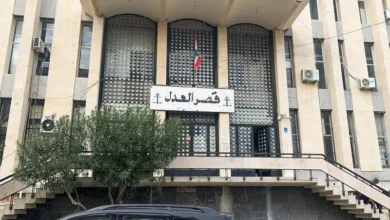Israel looks at new phase of Hamas war as fighting continues in Gaza

Israeli tanks pulled out of some Gaza City districts on Monday while remaining in others, residents said, ahead of a planned troop reduction in the war, but fighting raged elsewhere in the Palestinian enclave along with intense bombardment.
Israel says the war in Gaza, which has reduced much of the territory to rubble, killing thousands and plunging its 2.3 million people into a humanitarian disaster, has many months to go.
But Israel has signaled a coming shift in tactics, with an official saying on Monday that the military would draw down forces inside Gaza this month and shift to a months-long phase of more localized “mopping up” operations.
The official said the troop reduction would allow some reservists to return to civilian life, shoring up Israel’s war-battered economy, and free up units in case of a wider conflict in the north with Lebanon’s Iran-backed Hezbollah.
Artillery fire between Hezbollah and Israel has rattled the border since the start of the Gaza conflict and any new escalation carries risks for a wider regional war.
Tehran-backed fighters in Yemen have meanwhile attacked Red Sea shipping, drawing a US military response, and an Iranian warship has sailed into the waterway, Iranian media reported on Monday.
The war was triggered by a surprise Hamas attack on Israeli towns on October 7 that Israel says killed 1,200 people. Palestinian health authorities in Hamas-run Gaza say Israel’s offensive there has killed more than 21,800 people.
The scale of suffering in Gaza, where the bombardment has driven almost all inhabitants from their homes, has led Israel’s Western allies, including the US, to urge it to scale down its offensive.
Residents of Sheikh Radwan district in Gaza City, in the northern part of the enclave that Israel’s offensive focused on first, said tanks had withdrawn after what they described as the most intense 10 days of warfare since the conflict began.
“The tanks were very near. We could see them outside the houses. We couldn’t get out to fill water,” said Nasser, a father of seven living in Sheikh Radwan who did not give his family name for fear of Israeli reprisals.
Tanks also pulled out of Gaza City’s al-Mina district and parts of Tel al-Hawa district, while retaining some positions in the suburb controlling the enclave’s main coastal road, residents said.
However, tanks remained in other parts of northern Gaza and health officials said some people trying to return to their homes in a southern district of Gaza City had been killed by Israeli fire on Sunday.
Fighting in central parts of the enclave continued unabated on Monday, residents there said, with tanks pushing into al-Bureij and air strikes targeting al-Nusseirat, al-Maghazi and the southern city of Khan Younis.
Hamas showed its continued ability to target Israel after more than 12 weeks of the war, launching a barrage of rocket fire at Tel Aviv overnight.
New phase
Israel’s move to a new stage in the conflict comes after its initial bombardment and a ground invasion that began on October 27.
Air and artillery strikes have continued to pound the entire enclave during that time, leaving much of it in ruins.
With Israeli tanks and troops having overrun most of northern Gaza, while still pushing into the center and parts of the south, Hamas is responding with guerrilla-style ambushes from tunnels and bunkers in the enclave’s narrow streets.
Hamas seized 240 hostages on October 7 and Israel believes 129 are still held in Gaza after some were released during a brief truce and others killed during air strikes and rescue or escape attempts. Qatar and Egypt are seeking to negotiate a new truce and hostages deal.
Countries around the region fear the war could spill over. Israel and Hezbollah last fought a major war in Lebanon in 2006 and their fighting since October 7 has been the most intense since then.
“The situation on the Lebanese front will not be allowed to continue. This coming six-month period is a critical moment,” the Israeli official said.
Israel has also struck sites in Syria, while Iran-backed militia groups there and in Iraq have also targeted Israel’s US allies.
In the Red Sea, Houthi attacks on shipping have diverted many cargo companies from the crucial waterway, forcing them to take the far longer route around Africa, disrupting global trade.
The US and some of its allies have mounted a naval mission to protect shipping, leading to a brief firefight at sea on Sunday, and the risk of a new escalation with the Iran-backed Houthis.
Iran’s semi-official Tasnim news agency reported on Monday that an Iranian warship, the Alborz, had also sailed into the area.
Gaza-Egypt border
On Saturday Israeli Prime Minister Benjamin Netanyahu said the country must retake control of Gaza’s border with Egypt, an area now crammed with civilians who have fled the carnage across the rest of the enclave.
Retaking the border could also constitute a de facto reversal of Israel’s 2005 withdrawal from Gaza, raising new questions over the future of the enclave and prospects for a Palestinian state.
Washington said Israel should allow a Palestinian government to control Gaza when the conflict is over.
“We just take a fundamentally different view here in terms of what post-conflict Gaza needs to look like,” White House national security spokesperson John Kirby said on Sunday.
Senior Palestinian Authority official Hussein al-Sheikh in the Israeli-occupied West Bank said via social media that Israel taking over the border was evidence of a decision “to completely return the occupation.”










